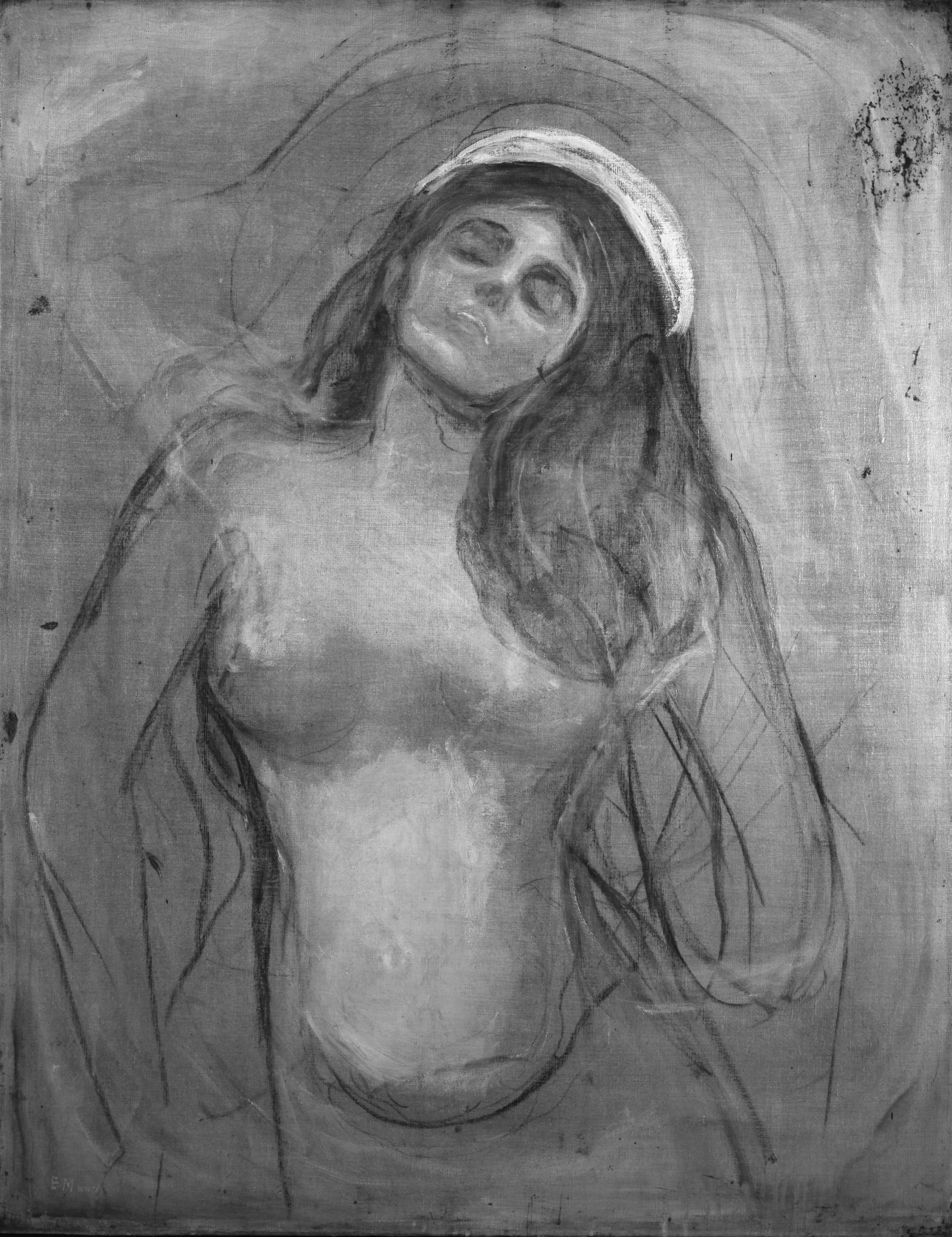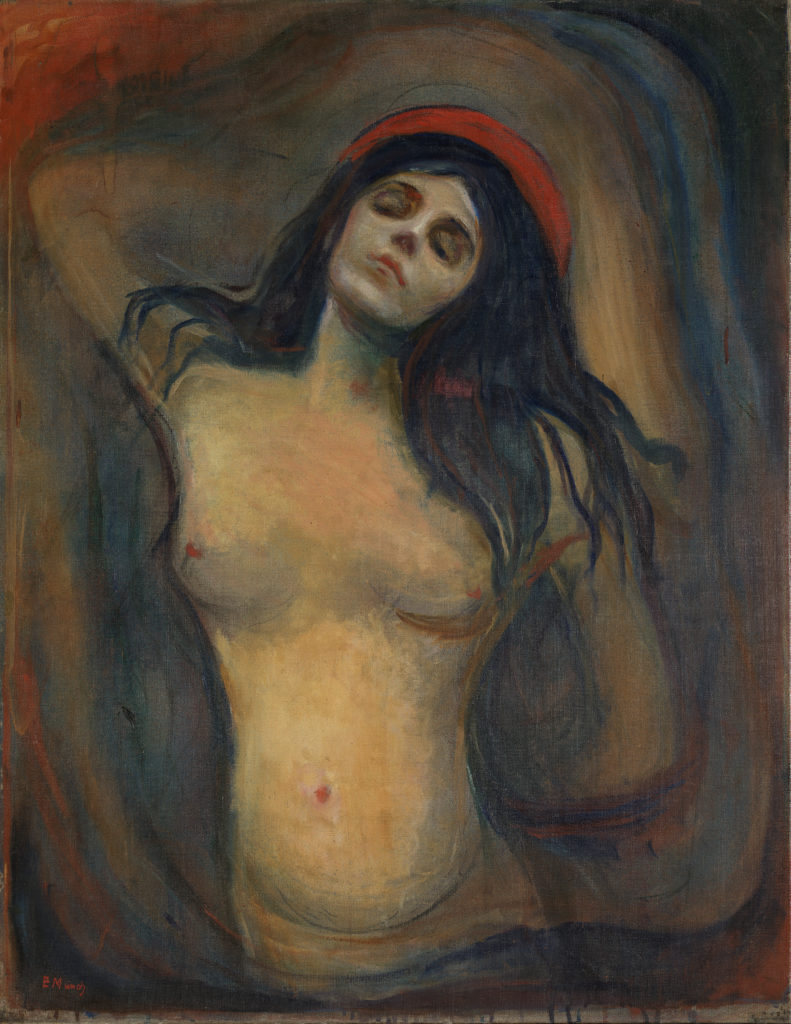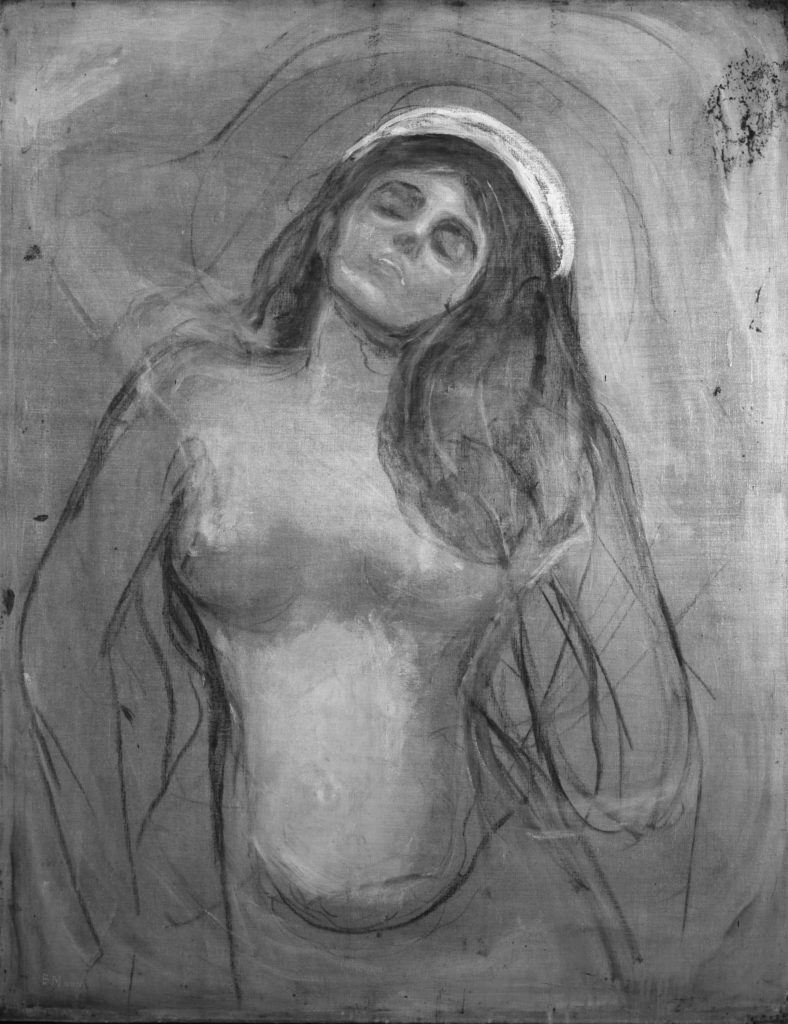


Left: Edvard Munch, “Madonna”, Photo: Børre Høstland/The National Museum.
Right: Infrared photograph shows underdrawings beneath the top layers in the painting. Photo: Børre Høstland/The National Museum
Previously unknown underdrawings have been uncovered in one of Edvard Munch’s most famous paintings, Madonna. The discovery was made by conservator Thierry Ford and photographer Børre Høstland at the National Museum of Norway using infrared reflectography, a technique that allows conservators to see underlayers beneath the surface of paintings. Madonna has undergone research and conservation in preparation of going on display in the Munch Room in the National Museum’s new building, which opens in Oslo on 11 June 2022.
The painting depicts a woman arching her back, with one arm behind her head and the other behind her back. The underdrawings reveal that Munch attempted a different composition before finally settling with the position of the arms that he used for later Madonna paintings. Edvard Munch painted five similar-sized versions of Madonna between 1894 and 1897. None of the paintings were dated by Munch. The National Museum’s version has until now been thought to be from either 1894 or 1895. The exciting discovery of Munch’s corrections to the composition now supports earlier theories that the National Museum’s version is the very first Munch painted.
– The new findings, together with earlier research, makes it reasonable to determine that Edvard Munch finished this first version of Madonna in 1894. It also gives us interesting information about how the artist worked on the composition. We can see that he experimented with letting both arms hang down. Along with other early sketches for similar motifs, the underdrawings in the painting tell us that he was hesitant about how to place the arms of his Madonna, says Vibeke Waallann Hansen, curator at the National Museum of Norway.
– We are thrilled about these latest findings that shed light on Madonna and on Edvard Munch’s process. They highlight the importance of research collaborations across fields of expertise, and in this case with our conservators and photographers. Our new museum has advanced technical facilities which will enable us to do much more research on the collection. We are looking forward to showing Madonna and other of Munch’s most important paintings to the public again when we open the new National Museum next year, says Karin Hindsbo, director of the National Museum.
A contradictory motif
The woman is a major and recurrent theme in Munch’s art, and his depictions of women are predominantly ambiguous and full of contradictions. The title Madonna, commonly associated with the mother of Jesus, contrasts with both the figure and the alternative title, Elskende kvinde (Woman Making Love). The figure has a halo, but it is red rather than gold, as it would be in a religious image.
– Edvard Munch’s representation of “a woman making love” was something very new and sensational in Norway. There was no tradition for erotic motifs in Norwegian art in Munch’s time. When the painting was shown in Kristiania in 1895 it was the subject of fierce debate, says Vibeke Waallann Hansen.
The new National Museum of Norway holds a collection of several of Edvard Munch’s most iconic paintings, such as The Scream and The Dance of Life, which will go on display in the new Munch room from 11 June 2022.
Infrared reflectogam was taken by Apollo